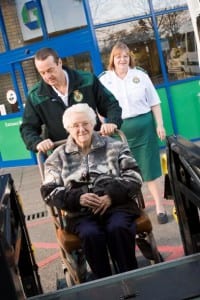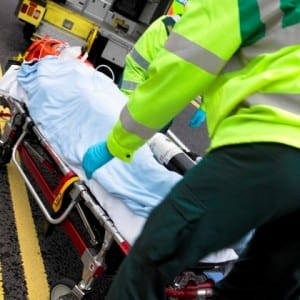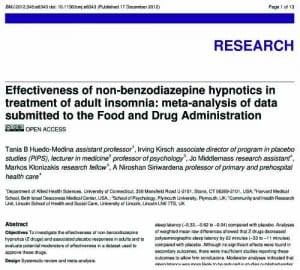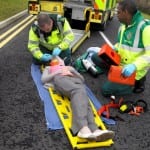The use of performance indicators has been a feature of public policy for over three decades. They were first introduced by the  Conservative Government to tackle perceived inefficiencies in the UK public sector. The answer lay in the New Public Management (NPM) reforms, which imported private sector techniques into the public sector to achieve better value-for-money. Consequently, NPM viewed the relationship between public service providers and users through the prism of a producer-consumer dichotomy, with the emphasis on producing quantifiable outputs. While the NPM reforms were introduced by the Conservatives, they were continued apace by New Labour, who wanted to avoid being too closely-identified with ‘producer’ interests, as Labour had traditionally been. New Labour, through their emphasis on greater competition and choice, wanted to provide public services that were sensitive to ‘consumer’ needs.
Conservative Government to tackle perceived inefficiencies in the UK public sector. The answer lay in the New Public Management (NPM) reforms, which imported private sector techniques into the public sector to achieve better value-for-money. Consequently, NPM viewed the relationship between public service providers and users through the prism of a producer-consumer dichotomy, with the emphasis on producing quantifiable outputs. While the NPM reforms were introduced by the Conservatives, they were continued apace by New Labour, who wanted to avoid being too closely-identified with ‘producer’ interests, as Labour had traditionally been. New Labour, through their emphasis on greater competition and choice, wanted to provide public services that were sensitive to ‘consumer’ needs.
Until April 2011, ambulance service quality has mainly been measured in terms of response times. These response time targets were: for Category A high-emergency calls, 75 per cent of calls to arrive at the scene in less than eight minutes and 95 per cent to arrive within 19 minutes; for serious but not life-threatening Category B calls, an ambulance to arrive within 19 minutes 95 per cent of the time; and Category C calls, which are neither serious nor life-threatening, where the target response time is negotiated locally.
The Category B response time targets were abolished by the Department of Health from 1 April 2011, and a set of Clinical Quality Indicators (CQIs) were introduced to complement the Category A eight-minute response time target. From June 2012, the Category A target was sub-divided into Red 1 and Red 2 calls. The former covers the most time-critical incidents and includes patients with cardiac arrest, breathing difficulties and obstructed airways. Red 2 calls are still serious but less time-critical and include patients suffering from strokes and fits. Some Category B and all existing Category C calls became the new Category C ‘Green calls’, and these were sub-divided into four groups: two serious, but non-threatening and two non-life-threatening groups.
The politically-important Category A eight-minute response time target has focused service delivery priorities on improving outcomes for life-threatening conditions and meets public expectations for a rapid response from the ambulance service. Research evidence suggests that timely interventions significantly improve survival outcomes among patients suffering from Out-of-Hospital Cardiac Arrests (OHCAs), but this condition typically accounts for only 1-2 per cent of the pre-hospital population. Cardiac arrests are part of a ‘first hour quintet’ of conditions, which also includes severe trauma, chest pain, stroke and respiratory distress, where early treatment and shorter pre-hospital times can improve survival outcomes. Even this quintet of potentially life-threatening conditions only represents 15-20 per cent of pre-hospital calls. Indeed, many ambulance service users do not present with life-threatening conditions at all.
By focusing on such a small proportion of the pre-hospital population, the Category A eight-minute target has led to a number of unintended consequences, not least of which has been the mismatch between resources and patients’ needs. For instance, some ambulance services concentrated vehicles in urban areas, where it was easier to achieve a faster response time, thus creating a potential spatial mismatch between resources and need. There have also been reports of gaming, when staff are under pressure to record the ‘right’ answer, even when response times are longer than eight minutes. Security of tenure for Chief Executives of ambulance services in England depends critically on meeting the eight-minute target, so it was inevitable that resources were channelled into meeting it.[1] The prioritisation of the Category A target may have led some ambulance services to regard a sub-eight-minute response as a success, even if the patient outcome was poor, and interpreting a response time of more than eight minutes that led to a good patient outcome as a failure.
The target culture in ambulance services may have created tensions between ambulance service managers and frontline clinicians, with diverging priorities between the two. Previous studies have suggested that managers’ key focus may be on meeting external targets while frontline ambulance clinicians are more concerned with delivering high quality care to patients.[2,3] A recent Health Foundation-funded quality improvement project in England, the Ambulance Service Cardiovascular Quality Initiative (ASCQI), which includes a collaboration between East Midlands Ambulance Service NHS Trust, the University of Lincoln, the National Ambulance Research Steering Group and the National Ambulance Services Clinical Quality Group is seeking to investigate the issue of culture in more detail.
The National Institute for Health Research (NIHR)-funded programme for applied health research, Prehospital Outcomes for Evidence-Based Evaluation (PhOEBE), is currently attempting to generate more meaningful measures of prehospital outcomes. The programme aims to achieve this by systematically reviewing the international evidence base relating to prehospital outcomes and linking Hospital Episode Statistics (HES) and Office of National Statistics (ONS) mortality data to risk-adjustment measures of ambulance service care.
While the introduction of CQIs to supplement the response time targets represents progress, there is still an ongoing need to generate a broader range of meaningful outcome measures that better capture the often-complex nature of patients’ experiences of the ambulance service. In generating new quality and outcome measures, there is always a risk of over-complication. Therefore, the new quality and outcome measures need to be sufficiently meaningful without being overly-complex. The PhOEBE programme should make a valuable contribution to this debate.
Viet-Hai Phung, CaHRU
1. Bevan G, Hamblin R. Hitting and missing targets by ambulance services for emergency calls: effects of different systems of performance measurement within the UK. J R Stat Soc Ser A Stat Soc 2009:172: 161-190.
2. Wankhade P. Performance measurement and the UK emergency ambulance service: Unintended consequences of the ambulance response time targets. International Journal of Public Sector Management 2011:24: 384-402.
3. Wankhade P. Different cultures of management and their relationships with organizational performance: evidence from the UK ambulance service. Public Money and Management 2012:32: 381-388.
 A new study has been published in Primary Care Diabetes on ‘Severe hypoglycaemia requiring emergency medical assistance by ambulance services in the East Midlands: a retrospective study’. Hypoglycaemia or low blood sugar is important because this may be linked to greater risk of death.
A new study has been published in Primary Care Diabetes on ‘Severe hypoglycaemia requiring emergency medical assistance by ambulance services in the East Midlands: a retrospective study’. Hypoglycaemia or low blood sugar is important because this may be linked to greater risk of death.


